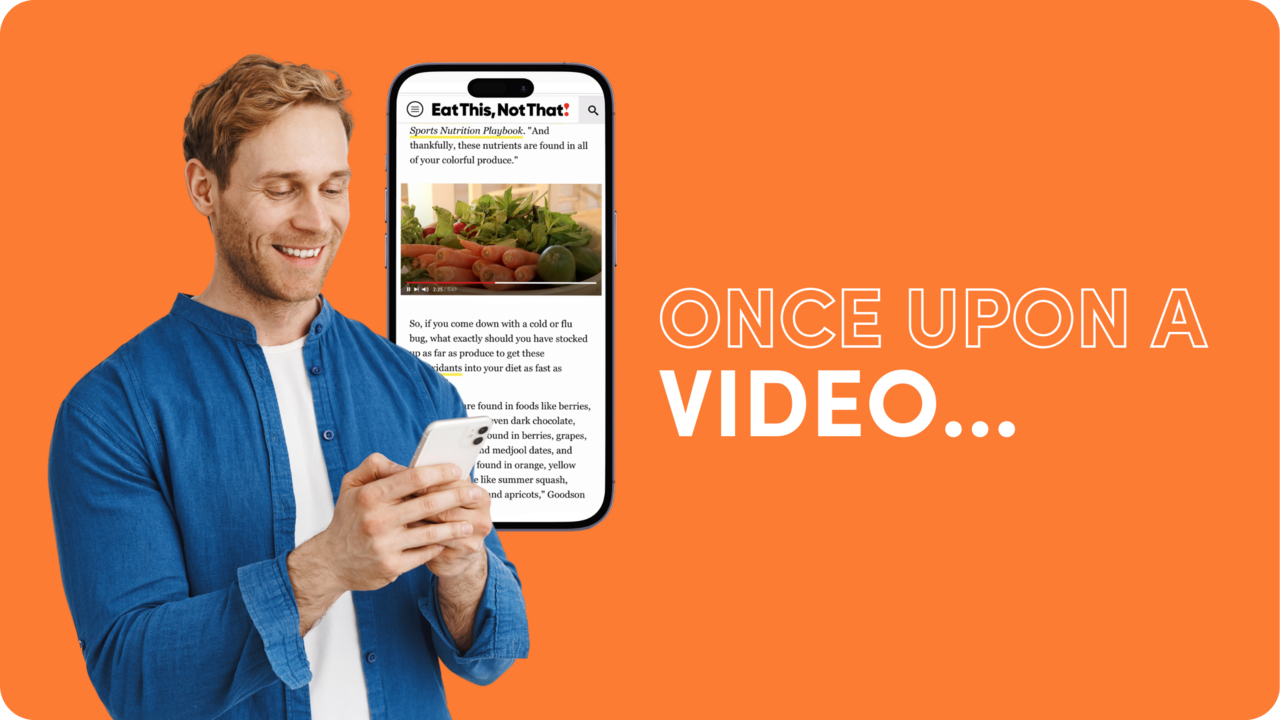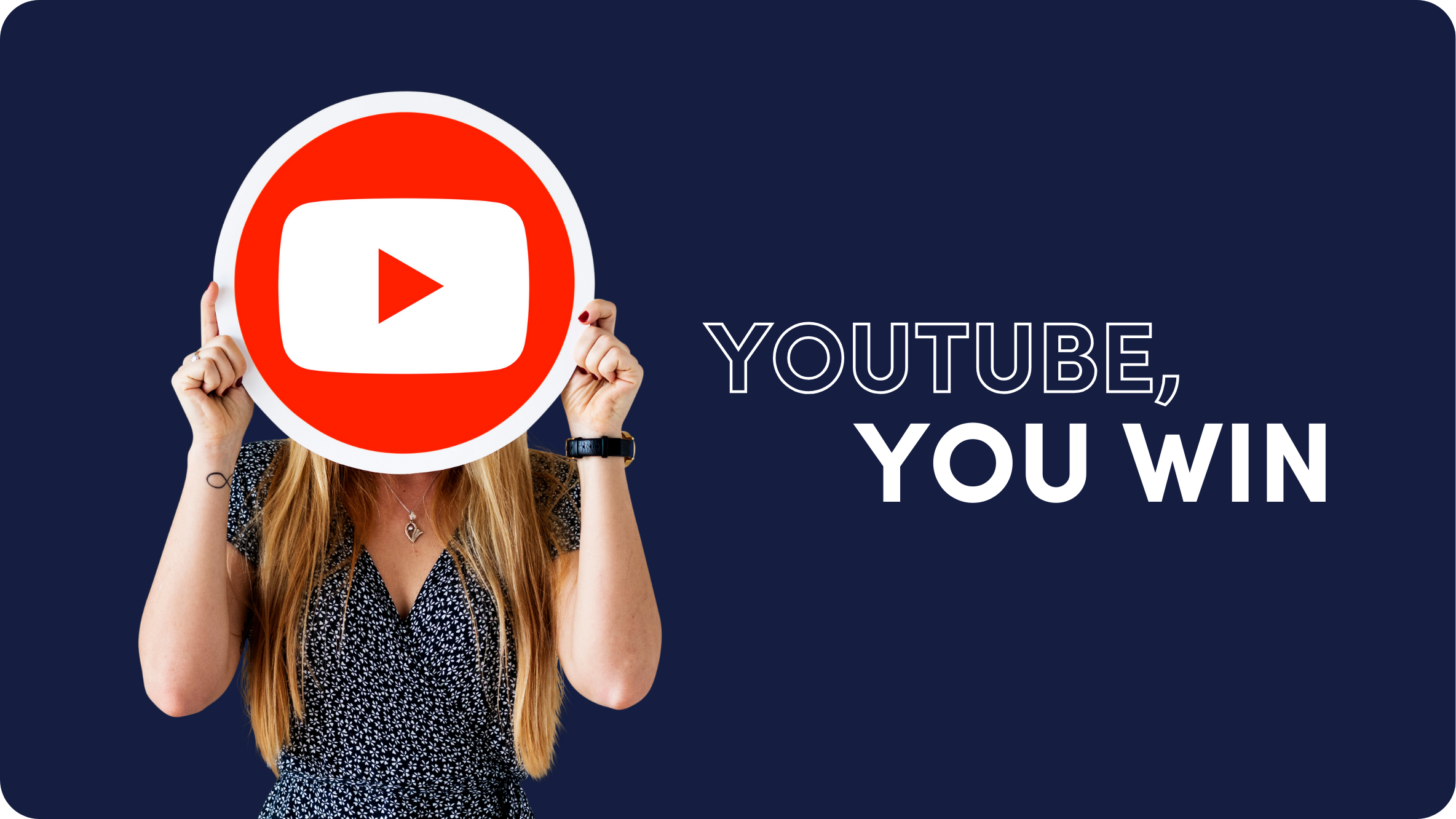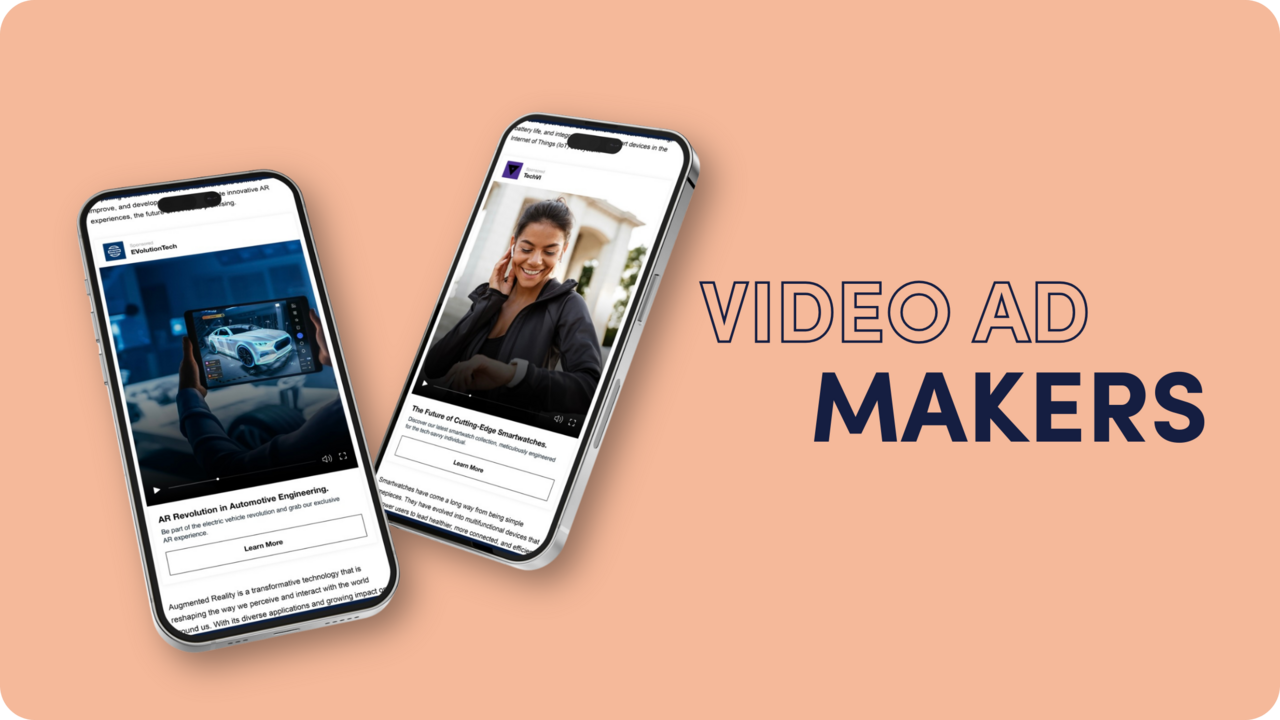How Video Storytelling Works and Why It’s a Powerful Marketing Tool
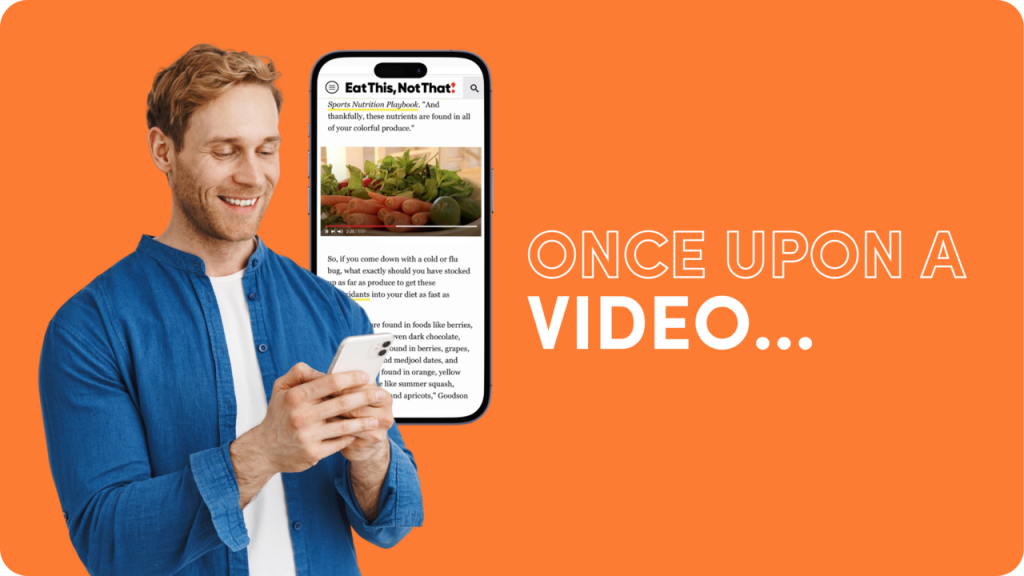
Stories are as old as the human race itself. The earliest recorded stories – the Bible, ancient mythology, and philosophy – are still widely read and explored today.
And video? Since the first ‘moving pictures’ at the start of the twentieth century, digital video has become the most popular form of media for information and entertainment. Indeed, 72% of consumers say they prefer video marketing to text.
In a world filled with a growing number of distractions, brands are engaged in a constant battle to capture people’s attention. Many of them succeed by combining the power of story with the popularity of video. Let’s take a look at what video storytelling is, and how you can effectively apply it to your marketing strategy.
What is Video Storytelling?
Video storytelling is a marketing tactic that uses the naturally engaging video format to tell a story about a brand, company, or product. Video storytelling guides viewers through relatable narrative-based content that gets to the heart of their pain points, ignites an emotional connection, and presents a satisfying solution. People get pulled into what’s happening due to a combination of factors, ranging from camera angles to the soundtrack, the characters, and the emotion of the story itself.
Video storytelling is much more than a sales pitch. It doesn’t focus on the product, but rather, it relates a story that directly or tangentially ties into the brand, product, or customer pain point. Telling stories with video engages all the senses – eyes, mind, and heart – which makes it more powerful and immersive, and very effective in driving engagement.
Video storytelling basics: How to start
The first stage of the video storytelling process is to address these foundational questions:
- Plot: What story do you want to tell? What is its structure? (Powerful stories typically consist of an introduction, conflict or complication, and resolution.)
- Purpose: Why do you want to convey this story to viewers, and what do you want them to do afterward?
- People: Who are the main characters in your video story? How do they relate to your audience?
- Place: What’s the main location for the video, and how does the setting shape the narrative?
- Audience: Who will primarily see this video? Will they be new customers, potential customers, employees, or another group?
- Distribution method: How will you share the video story with others, and where will it be hosted (ie. YouTube, your website, elsewhere)?
Once you’ve answered these, you’ll have a solid framework from which to operate. Think about how you can connect to your audience, what techniques would make the video especially memorable to viewers, and what could make it shareable. Going viral is every marketer’s dream, but it doesn’t happen often, For a video to be considered viral, it should get around 5 million views on YouTube in a week, or around 1 million views on TikTok within a few days.
How to Make a Storytelling Video
Excelling at the art of video storytelling requires first understanding how to tell a good story.
Remember that people have short attention spans, and you want to tell a story that keeps them hooked from beginning to end. If you do manage to grab the interest and attention of the audience throughout a video story, it is usually because you have aroused the viewers’ emotions.
Also, remember the key principle of “show, don’t tell”. Edit the video smartly, so you’re not spelling out every single idea to the audience, but only those elements that are necessary to weave a compelling tale that leaves them asking for more.
Here are 5 steps to make a storytelling video:
- Identify your goal and target audience. Once you know what you want to achieve with your video story and which viewers you want to target, it’ll be easier to move forward with confidence.
- Create a narrative. You may want to hire people with screenplay experience to get your story told well. It’s crucial that the plot of the video is clear, and that the characters are well-defined and memorable, especially since most viewers will probably only see it once.
- Decide on a video format (animated, live actors, special effects). This decision may largely depend on your budget. Your overall timeframe and other deadlines will also play a role in determining the video format, too. Filming a live-action video will take more time and resources than creating a story from stock video clips. Don’t forget the potential of video AI tools, which are improving every day.
- Assemble a production team or hire a production studio. When choosing professionals or companies to take part, find out about their prior experience and watch their previous videos to see if the style and vibe match your goals.
- Create a promotional strategy to get your video seen. Your promotional plan may include social media coverage, press releases, native video distribution, and even one-off local events where you show the video. Make sure you have the marketing game plan in place before the video goes live because you’ll need to start spreading the word immediately.
Of course, there is also the question of your video marketing budget. If this is your first time diving into the world of video storytelling, you may want to hire a video production company to steer the process and make trustworthy recommendations. Those experts can inform you of whether your budget is realistic for what you want to achieve, plus help you plan a reasonable schedule for creating your video storytelling piece.
On the other hand, you can try out DIY video creation tools or freelance video creators and see what quality level you can produce with a smaller budget. After all, if you have a very strong narrative and script, you may be able to create a powerful video story, even without the backing of a professional video producer.
Video Storytelling Techniques
Video storytelling techniques that are most suitable will vary depending on your primary aim. For example, if you’re making an explainer video, you might rely on animation or statistics to drive your points home. But if the video story is primarily aimed at selling a new product, you may want to use actors to tell a story that relates to the audience’s key pain point. Although more expensive, incorporating actors can strengthen the human element far more than animated video, and may boost customer relatability and engagement. This is something to consider if your budget allows for actors.
Whichever way you go, here are a few video storytelling techniques that can turn a simple story into a powerful marketing tool:
- Create a strong arc. This makes it easy for audiences to follow along with the story, become immersed in the twists and turns, and keep them watching through to the end.
- Make your protagonists lovable and relatable. People should ideally see parts of themselves in the video’s stars. Avoid using polarizing characters because that may turn off certain audiences and prevent them from appreciating the message.
- Edit the video for maximum storytelling effect. If there are aspects of the video that don’t do anything to push the story forward, cut them out. It may be useful to have an outside party, ideally someone who matches your target audience, provide feedback about whether any parts take away from the story rather than adding to it.
- Make it visually beautiful and appealing to the senses. Think about how camera angles, scenery, and background music could help your video stick in the minds of viewers and make them want to watch it again.
Video Storytelling Tips
It can be difficult to know where to begin with developing a video story. Before you get started, consider these video storytelling tips to maximize the video’s plot and mood, and to grab the audience’s attention and hold it:
Choose a proven plotline format
If you look closely at different types of stories, they tend to follow certain plotlines. One type is called ‘Overcoming the Monster’, and it often involves the underdog eventually conquering their most significant challenge. Many sports films take this approach.
Selecting a narrative where a hero embarks on a quest is another popular option that can work well for businesses. In that instance, the story’s main character encounters foes or obstacles, but undergoes a transformative journey in the process, learning things about themselves that they didn’t know before and eventually arriving at a better place
Mind your audience’s attention span
Marketers often want to know the best length for a storytelling video, and the answer varies depending on the platform.
In the 2024 State of Video report, Wistia found that video engagement consistently lowers according to the video length. Videos under 60 seconds get the highest engagement.
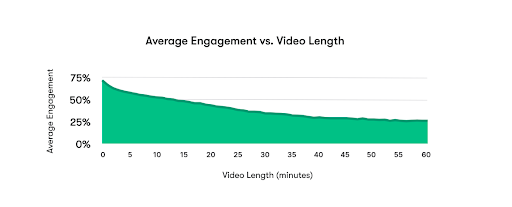
However, this does not mean that you can’t or should not produce longer videos. It depends on the story you want to tell, the target audience, and the platform where the video appears. In the right context, long-form videos can also perform very well, as long as the story is powerful and moving.
Use emotional triggers
Filmmakers use a variety of tactics to capture emotions visually and communicate the character’s feelings to the audience via the screen. For example, slow motion can emphasize the significance of a feeling or exaggerated facial expressions and can help the audience internalize the emotion of the scene.
Video storytelling ads are shorter of course than feature films, however, the same principles can be used to create emotional triggers.
Harness the power of music
The right music can take video storytelling efforts to greater heights by complementing what’s happening on the screen. Music creates powerful emotional associations that people link to events in their own lives.
The music you choose will depend on the mood you are trying to create in your video story. An upbeat track might seem to be the best, as it generates happy feelings, however, research indicates that people get positive benefits from listening to sad music too. Melancholy music has been shown to lead to better emotional regulation and spark the listener’s imagination. If a slow, pensive track fits in with your plot and characters, you can go with that instead of gravitating toward happy tunes.
Here are some bonus tips that can go a long way to enhancing your video story:
- Be relatable. Tell a story that shares a common human experience so more people can relate to it.
- Be economic. Ensure that each part of the video drives the story forward.
- Consider POV. Create a story from the point of view of a typical target audience member. See the story unfold from their perspective, rather than the company’s.
- Use a natural, informal tone. This helps audiences better understand and connect to your message.
- Take design and visual factors into account. These include lighting, wardrobe, and color palette. When done right, these will better support your video storytelling goals and message.
Video Storytelling Examples
Visual storytelling need not be elaborate to have an impact. This method of reaching an audience often pays off when people can see something of themselves in the story. Take the example of a University of Phoenix animated story ad that tells a simple yet common story: a mom finds herself unemployed when her job gets taken over by automation. So she reskills with a degree from the university and starts a new career in IT. The animation is done beautifully, with emotional expressiveness, and the accompanying song sets just the right tone.
Then Airbnb’s “We Accept” video narrative strikes a chord with audiences by showcasing some of the brand’s values. It has a simple design of rapidly changing faces that represent Airbnb’s customers and put the viewer in the center.
These examples show that sometimes, simplicity is the best route to take.
Here’s an example of a way more technically complex and richly narrated video story. It’s the 2019 Christmas video by the UK department store chain John Lewis, featuring a blend of live actors and animation. The powerful background song by Bastille and the whimsical fantastical setting of the film made it a popular video storytelling example that successfully communicated the values of the holiday season (and the huge, soulful eyes of Edgar the young dragon certainly pulled on the heartstrings):
Best Brand Storytelling Videos
The best brand storytelling videos hold viewer attention by highlighting and resolving a problem that resonates with the audience. Plus, they incorporate other elements, such as humor, parody, emotion, and plot twists to help strengthen the viewer’s connection to the story.
Take a look at some recent examples of the best brand storytelling videos:
Kia – Perfect 10
This ad for the Kia auto brand is a perfect example of video storytelling that drives emotion (in this case, literally!). A young girl performs in an ice skating competition, but the closeups of her sad expression and her proud but equally sad father in the audience next to an empty chair show that someone is missing. The story arc flows as smoothly as the Kia EV9 in the snowy landscape, and the heartrending music and emotional expressions of the actors create a gripping crescendo. Top scores for this video storytelling example!
IKEA – Smart home
In this short IKEA ad, the story is one that we can all relate to: that feeling when you wake up in the morning. The star of the video is cozy in bed, and with her smart home setup, uses her mobile phone to turn on the side lamp and brew a cup of coffee without getting out of bed. Take note of the sound and music; it does a great job of supporting the story, which is told without words.
McDonald’s – WcDonald’s
This video series by McDonald’s takes the popular anime cartoon genre and uses it as a storytelling and branding tool. In the anime world, McDonald’s has long been referred to as “WcDonald’s”, turning the golden arches upside down to avoid copyright issues. The McDonald’s brand decided to use this to its advantage, creating a complete anime universe with the name WcDonald’s. The WcDonald’s video series goes beyond simple video storytelling; it is a world of characters and stories in the anime fantasy style that will keep audiences watching for the next installment.
Corporate Video Storytelling
Video storytelling is a powerful and valuable way to stir emotion in viewers and engage potential audiences.
However, corporate video storytelling has another crucial angle that must be considered. With corporate video, it’s particularly important to be aware of where the video will air and which audiences will see it and ensure that the chosen narrative can cross cultural boundaries. A video story may seem perfect for a certain market or culture, but can easily sink or get lost in translation in another.
Also, it’s wise to avoid controversial topics or those that arouse strong opinions. If you are skirting controversy, strive to get your point across in the most diplomatic way. In 2017, a Pepsi ad starring Kendall Jenner received scathing criticism on social media for making light of the police violence issue that disproportionately affects people of color. Pepsi ultimately pulled the ad soon afterward.
The Power of Video Storytelling
Video storytelling works so well because it draws people in, holding their attention spans and making them feel invested in what’s happening. Video stories can be educational, as with explainer videos. Other video stories don’t have a lot of dialogue but speak volumes visually and with the help of the right music.
It will take time and effort to make video storytelling work for you, but success can pay off in the form of thousands of views, increased brand recognition, and more. Even if you have a modest budget, it’s worth seeing what your visual storytelling options are and how you can use them to boost your brand and customer engagement levels.
